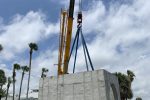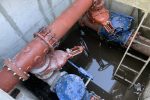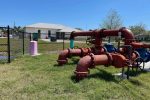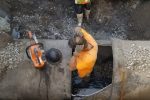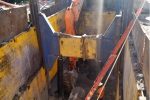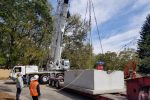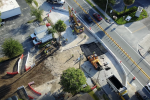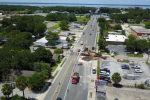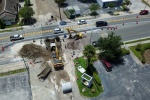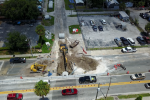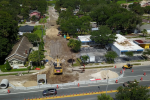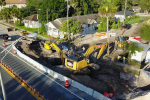Our in-house drainage construction experts are well-practiced in executing industrial, institutional and municipal storm drainage systems.
As an industry leader in installing storm drain systems, you can bet that we have extensive knowledge in the latest storm drainage technologies. That is, we take into account the effectiveness of the local stormwater practice, and its cost, and we look at its overall effectiveness to see where additional improvements can be made without disrupting the rest of the system. Some individual practices may not be effective alone but, in combination with others, may provide a key function in highly effective systems.
Our storm drainage services include the following:
- Installing storm drain pipes
- Digging and setting manholes
- Installing curb inlets
- Outlet structures
- Building storm water chambers
- Retention and detention systems
- Pouring transition and other specialty concrete structures
- Head walls, and rip rap used to armor streambeds.
Storm Drainage Systems
The most significant factor in a storm drain system is its massive pipeline. We have installed all types of storm drainpipes, ranging from 4-inches to 60-inches in diameter. These types of drainage systems include reinforced concrete pipe (RCP), high-density polyethylene (HDPE), polyvinyl chloride (PVC), corrugated metal pipe (CMP), and ductile iron pipe (DIP).
SanPik has worked on many large construction projects requiring site-specific Storm Water Pollution Prevention Plans (SWPPP) that designate which Best Management Practices (BMP) contractors must use. The implementation of BMPs is important to alleviate the pollutant runoff from construction site activities into the natural environment.
We are able and equipped to install residential, commercial, industrial, institutional and municipal storm drains. Because our surroundings—both natural and manmade—depend on the efficiency of the local stormwater drainage system, we are very conscious of how water and debris are separated. Done wrong, and it could have a major environmental impact. That’s why we have grown ourselves, through education and participation, to be a leader in safe, timely, and quality-driven installations of modern and specialty drainage systems. We’re even called upon, from time to time, to bring other companies up to speed on what the Environmental Protection Agency’s National Pollutant Discharge Elimination System program asks of storm drainage systems.



